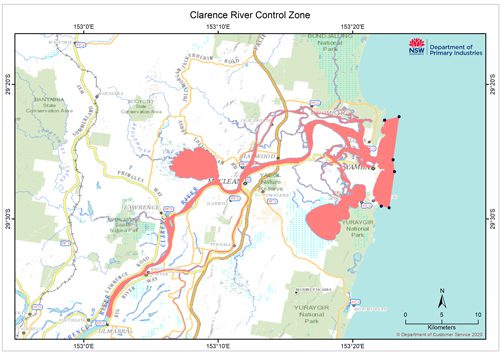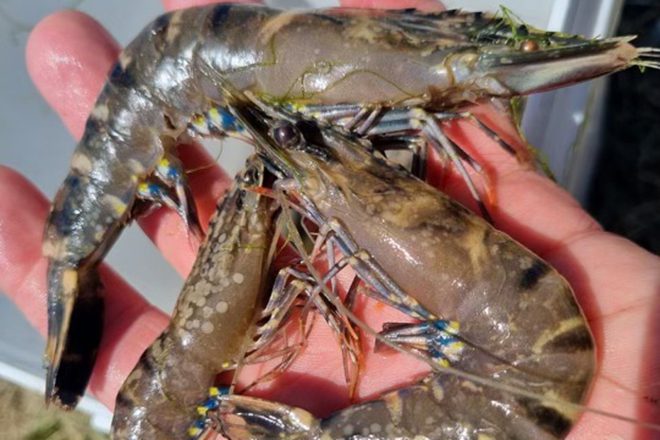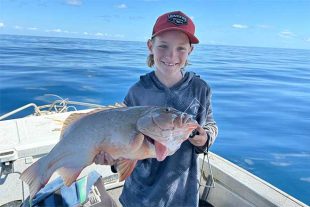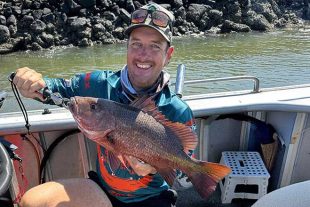White Spot has been detected at a prawn facility in northern NSW and confirmed by NSW Department of Primary Industries (DPI) and Australian Centre for Disease Preparedness (ACDP) tests.
NSW DPI has stood up an emergency response Incident Management Team. The team is working to determine the source of the outbreak and to complete surveillance activities.
On 16 February 2023, a temporary control order was issued including restrictions on the movement of raw, uncooked decapod crustaceans out of and area defined as the Clarence River Control Zone (see map below), while containment, source detection and surveillance activities are underway.
Prawns and polychaete worms may only be moved out of the Clarence River Control Zone if they have been cooked. There are exemptions for certain uncooked decapod seafood species, such as crabs and lobsters, to be moved out of the Clarence River Control Zone for the purpose of human consumption only, which must be cooked as soon as possible upon arrival at the destination.

Any person in possession of prawns that have originated from the Clarence River Control Zone from 12-15 February 2023 must contact NSW DPI as soon as practicable be either calling the Emergency Animal Disease Hotline on 1800 675 888 or by emailing aquatic.biosecurity@dpi.nsw.gov.au
Consumers are assured that White Spot does not pose a threat to human health or food safety. NSW seafood, including prawns, remains safe to eat.
At this point in time, there is no indication that the virus has spread beyond this particular facility. It is also not known how white spot syndrome virus entered the facility.
Investigations and testing for all potential entry pathways are underway.
NSW DPI has been working closely with the affected farm, the seafood industry and other state and federal jurisdictions, to ensure containment and complete surveillance activities in wild prawns in the area.
White Spot is highly contagious to prawns and can cause high rates of mortality in affected stock. Other crustaceans can be carriers of White Spot, but they are rarely impacted. White Spot poses no threat to human health or food safety.
White Spot spread through Asian prawn farming regions rapidly in the 1990s and established in farmed prawn in the Americas – causing widespread losses.
More information visit:
 Bush ‘n Beach Fishing Magazine Location reports & tips for fishing, boating, camping, kayaking, 4WDing in Queensland and Northern NSW
Bush ‘n Beach Fishing Magazine Location reports & tips for fishing, boating, camping, kayaking, 4WDing in Queensland and Northern NSW









